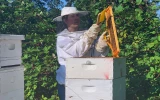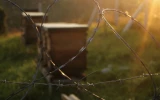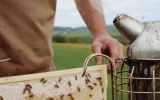Cleaning Beehive Frames After Wax Moths (Quick Fix)
Wax moths are pervasive, opportunistic pests that usually invade weak colonies and target stored beeswax combs. Infestation by wax moths will sometimes lead to the death of a bee colony, and cleaning after this mess is an arduous job. If you’re looking for a quick fix to clean your beehive frames after a wax moth infestation, this article can help you.
To clean your beehive after wax moths, disassemble the hive and scrape all debris. Clean frames with a strong bleach solution and freeze them in the freezer for several days to kill all life stages of the moth. Then, spray the hive components with Bacillus thuringiensis to prevent future infestations.
The steps we mentioned might be easy, but these must be completed thoroughly to prevent moth eggs from hatching and reinfesting your hive. If you’re facing this situation as a first-time beekeeper, we’ll walk you through the step-by-step cleaning process as you keep reading below.
Summary
- Wax moths usually target weak bee colonies such as a split beehive or queenless beehive.
- To quickly fix frames infested with wax moths, disassemble the hive and scrape all debris thoroughly, clean it with a bleach solution, freeze it in cold temperatures, and then spray it with Bacillus thuringiensis.
- Keeping your colony strong is one way to prevent wax moths from overpowering your beehive.

On this page:
Quick Fix to Cleaning Beehive Frames After Wax Moths
Beehives are susceptible to several surrounding threats such as bacterial and viral diseases, mites, fellow bees, wasps, and even wax moths. Wax moths are common pests that harm honeybee colonies and cause detrimental effects possibly leading to the death of a colony.
Wax moths enter the hive through upper entrances and exterior spaces. The greater wax moth produces up to 800 eggs, while the lesser wax moth lays at least 300 eggs. Female moths lay eggs in gaps, cracks, and crevices, which hatch into larvae within a few days.
The larval stage of wax moths is the most destructive form – tunneling through honeycombs and consuming and destroying beeswax. They prefer combs that have been used by the brood and previously contained pollen.
Each wax moth larva will then spin silk webs around itself to form a cocoon and enter the pupa stage. They will eventually grow into adult wax moths, lay eggs in the beehive, and repeat the cycle – producing hive boxes full of moth larvae and webbing.
To clean such a mess, here is a step-by-step process of cleaning frames after a wax moth infestation:
Disassemble the hive and scrape away all debris
Heavy infestation of beehives will require you to take apart all hive box components to be able to access all possible hiding places. You must not miss even just one egg. After dismantling, use your hive tool to scrape off all signs of the wax moth - eggs, larvae, cocoons, moths, webbing, and feces.
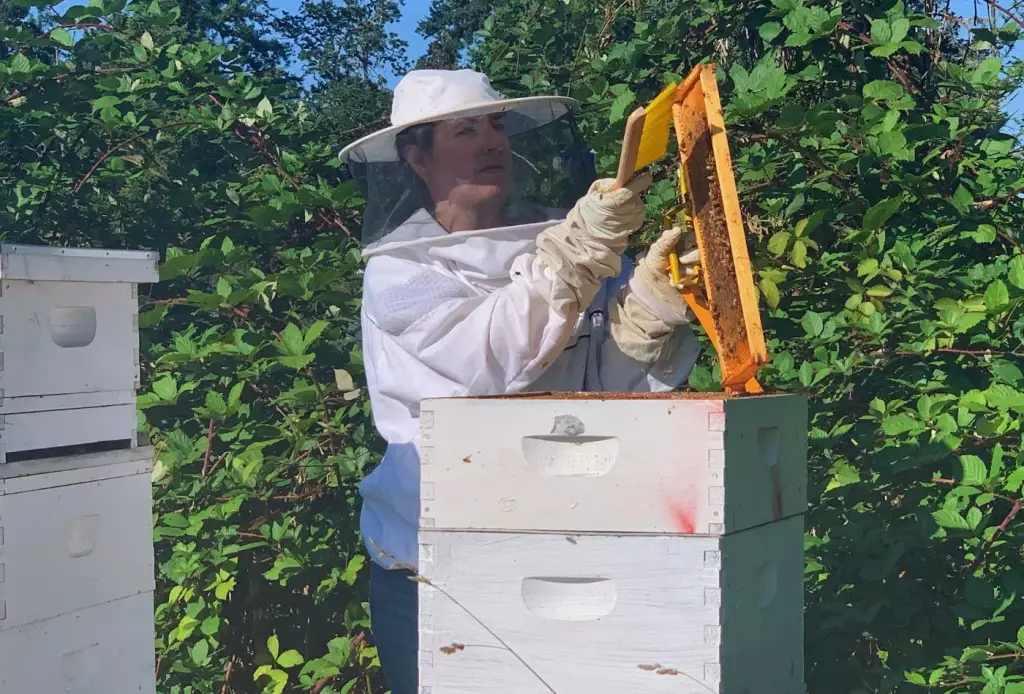
Remove propolis and wax too and check the frames for the intensity of the damage. If the damage is too extensive, you might need to throw it away or burn it.
Soak the frames with a strong solution of water and bleach or Clorox
After scraping, thoroughly clean the frames with a strong solution of water and bleach. Bleach or Sodium Hypochlorite is best used at 2-4% solution to perfectly disinfect hive components.
Since bleach is a water-based product, it won’t be able to get through under any wax or propolis, that’s why this step comes second after you’ve removed all wax and propolis.
Freeze the frames to kill wax moths at all stages of life
After all the scraping and cleaning, freeze the frames in the freezer at a temperature of -7°C or 19.4 °F can kill all stages of wax moth within 4–5 hours. Periodic freezing of beehive frames and rotating them in has been proven effective against wax moths.
Since you will need to rotate the use of frames, beekeepers must have extra beehive frames. Before storage, frames must be frozen and stored in moth-proof bags after. Take note, however, that when you removed them from the freezer, they should not remain sealed in plastic because it may promote mold growth.
Spray the frames and hive box with a Bacillus thuringiensis
After the freezing process, the box can be treated using a solution of Bacillus thuringiensis to prevent recurring infestation by wax moths.
Bacillus thuringiensis kills larvae of wax moths. It does not affect the adults nor the eggs, but since the larvae are the most destructing stage, targeting them will be enough.
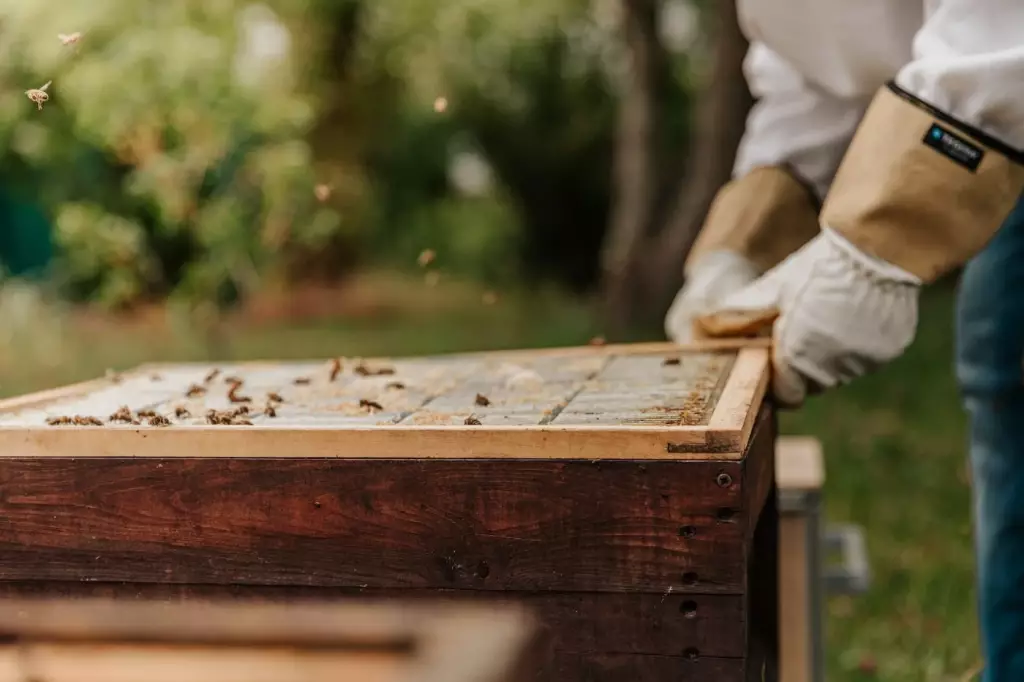
Tips for Preventing Wax Moth Infestation
Although wax moths are pests and not diseases, they are still able to spread from one beehive to another until the entire apiary has been infested with them. For this reason, beekeepers must ensure the following to prevent their hive from being maneuvered by these pests:
Keep your bee colony strong
A strong honeybee colony can easily ward off wax moths. They can kill the wax moth as it enters the hive and remove all wax moth larvae as well.
A split beehive is vulnerable to wax moths as they are still adjusting. You must ensure to include enough bees to protect your split hive.
Aside from a split beehive, a colony with no queen may also attract wax moths due to population decline. The best way to combat this is to requeen the hive naturally.
Only use bottom entrances on your beehives
Wax moths make their way to your hive through the upper entrances. If your hive has upper entrances, you must seal them and make sure that the lids are placed properly. Alternatively, you can also screen your top entrances to prevent the entry of wax moths.
Avoid using too many brood boxes in one hive
One of the things to consider whenadding brood boxes to a hive is the capacity of the bee population, as well as the queen, to keep up with the number of brood boxes.
Using too many boxes on a hive all at once may cause a lack of bees to patrol the comb, therefore giving wax moths free entrance to the hive.
Use wax moth traps on your beehives
To lessen the number of wax moths entering a beehive, wax moth traps or baits can be used. Wax moth traps mimic beehive smells which attract wax moths. The moths then enter the trap and get drowned in it. These traps are effective in protecting beehives and stored honey supers from infestation.
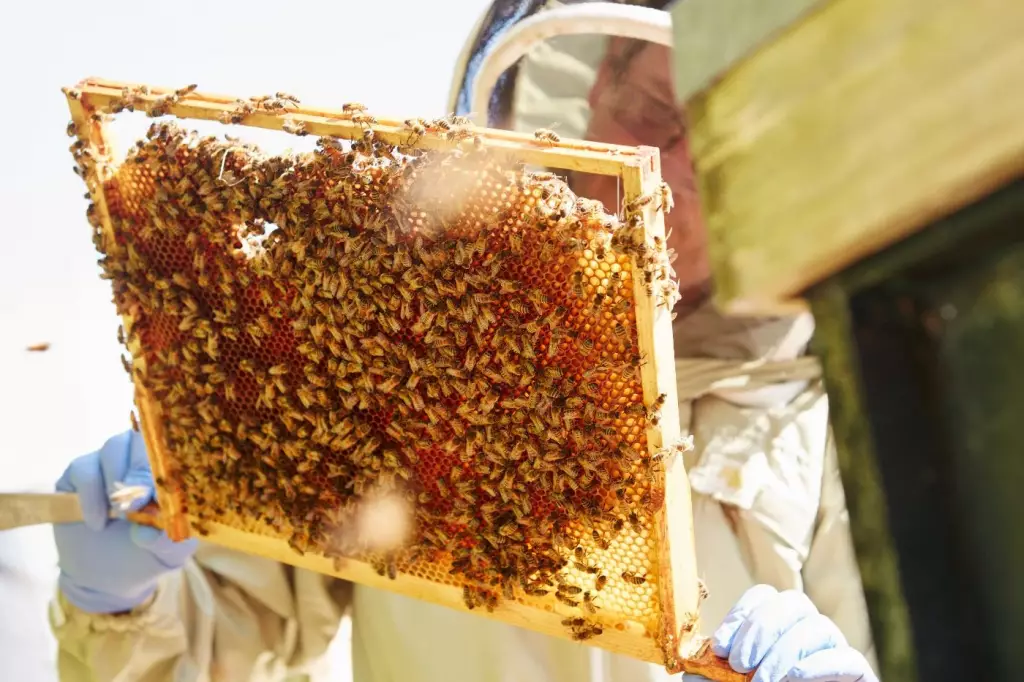
Use foundationless frames for your beehives
Frames are mostly targeted by wax moths because of beeswax. This part of the hive also becomes unused and unguarded by bees which leaves it more prone to wax moths, so it’s better to use foundationless frames so wax moths will have lesser space to hide.
Use Paradichlorobenzene (PDB) crystals
Instead of using mothballs, which are harmful to bees and humans, use PDB crystals instead as it is safer. It is usually added on top of five stacked supers.
When using PDB, tape up all cracks between supers to create an enclosed fumigation chamber. Place the PDB on top of the newspaper and put it on a top cover.
Make sure to air out the frames for at least 2 -3 days before reusing them. PDB crystals can kill adult moths and deter them from entering the boxes.
